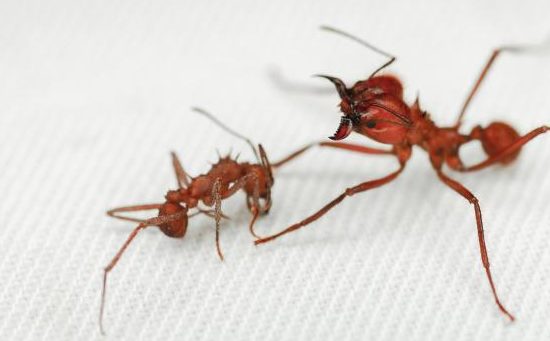The giant Bacheet ant is the largest of the leaf-cheeting ant population. It is extending its jaw to the worker ant with a layer of magnesium-rich calcite as armor, which can protect the latter from attack. Image from Caitlin M. Carlson. Natural research Photo
The giant Bacheet ant is the largest of the leaf-cheeting ant population. It is extending its jaw to the worker ant with a layer of magnesium-rich calcite as armor, which can protect the latter from attack. Image from Caitlin M. Carlson. Natural research Photo
Springer Nature’s academic journal Nature-Communications recently published a zoological research paper, reporting on the first known biological mineral body armor found by researchers in the insect world.
The paper said that this armor is abundant in marine life, but the discovery of this armor in a leaf-cutting ant may be of great significance to scientists’ understanding the evolution of armor and broaden people’s understanding of the use of biological minerals in the natural world.
It is understood that the evolution of biological mineral bones began more than 550 million years ago. This armor has been found in crustaceans, such as marine animals such as lobster, but it has never been seen in insects before.
giant Bacheet ant is the largest
giant Bacheet ant is the largest According to the research of Cameron Currie and colleagues of the University of Wisconsin-Madison, the exoskeleton of a leaf-cutting ant is covered with magnesium-rich calcite armor. They found that this armor grows as leaf-cutting ants mature, increasing their exoskeletal hardness and nearly covering the whole body.
They also observed that worker ants with biological mineral exoskeleton are more likely to survive when encountering giant barche leaf ants than workers with no biological mineral exoskeleton; this armor also helps to protect them from the pathogenic fungus beetle green zombie.
The authors of the paper concluded that the discovery of this armor in a more thoroughly studied insect species shows that it is more common than previously thought.



